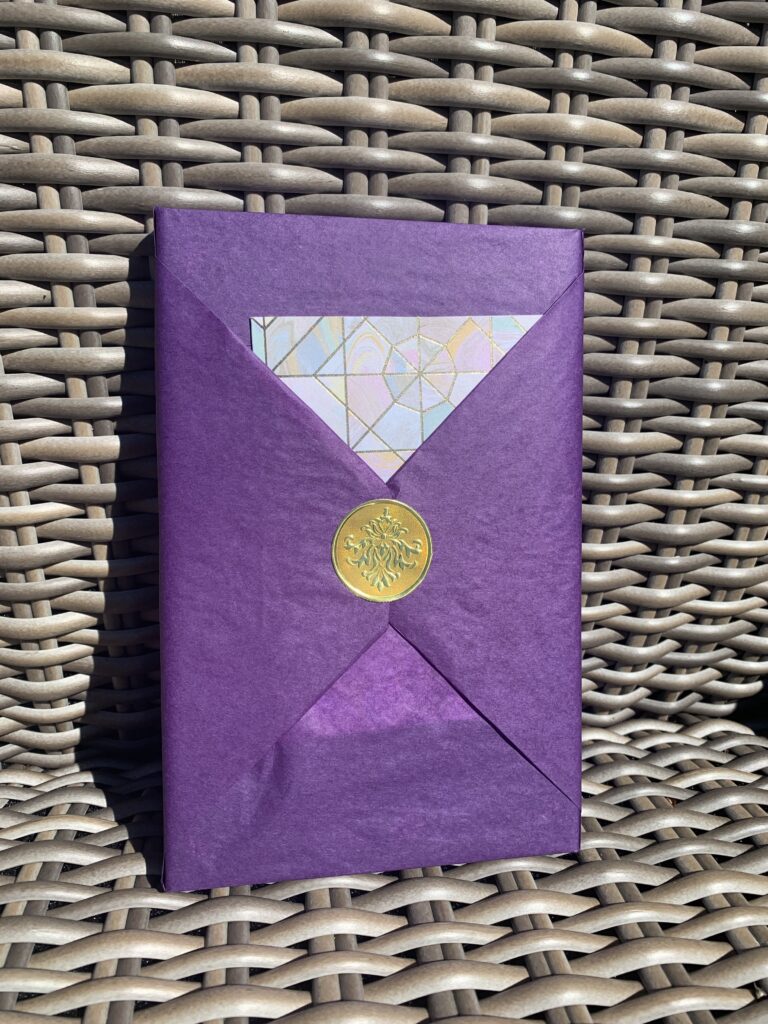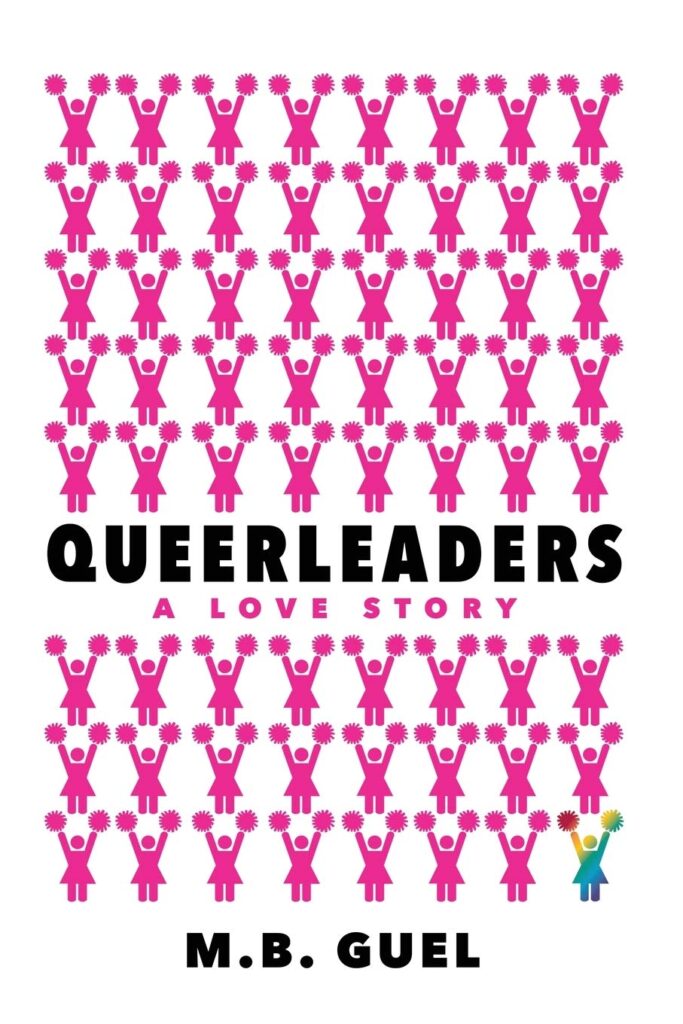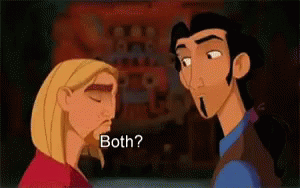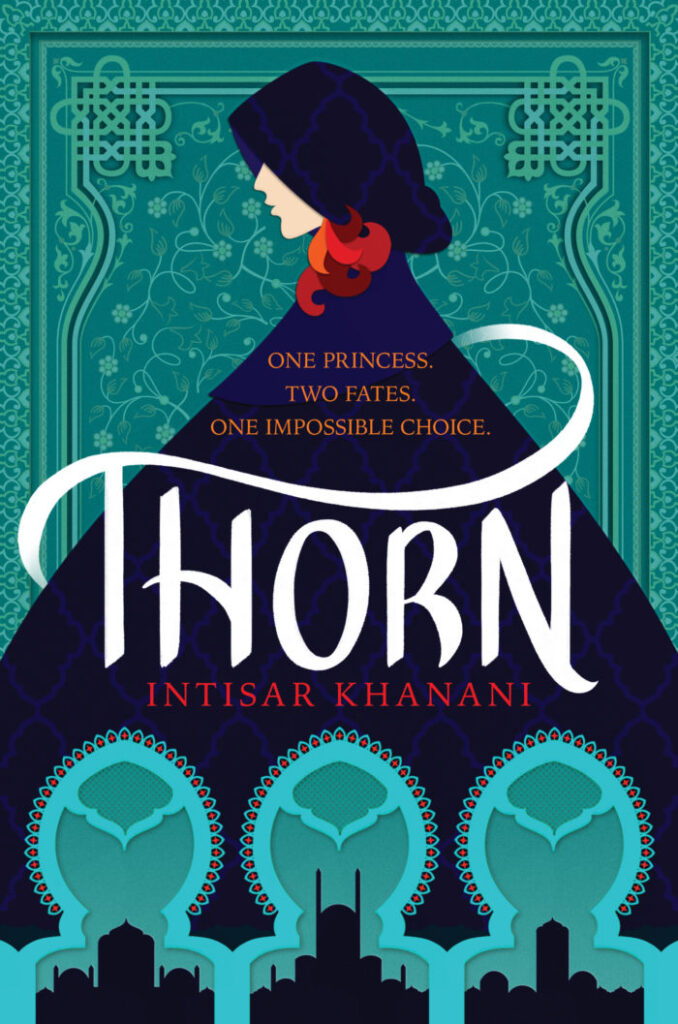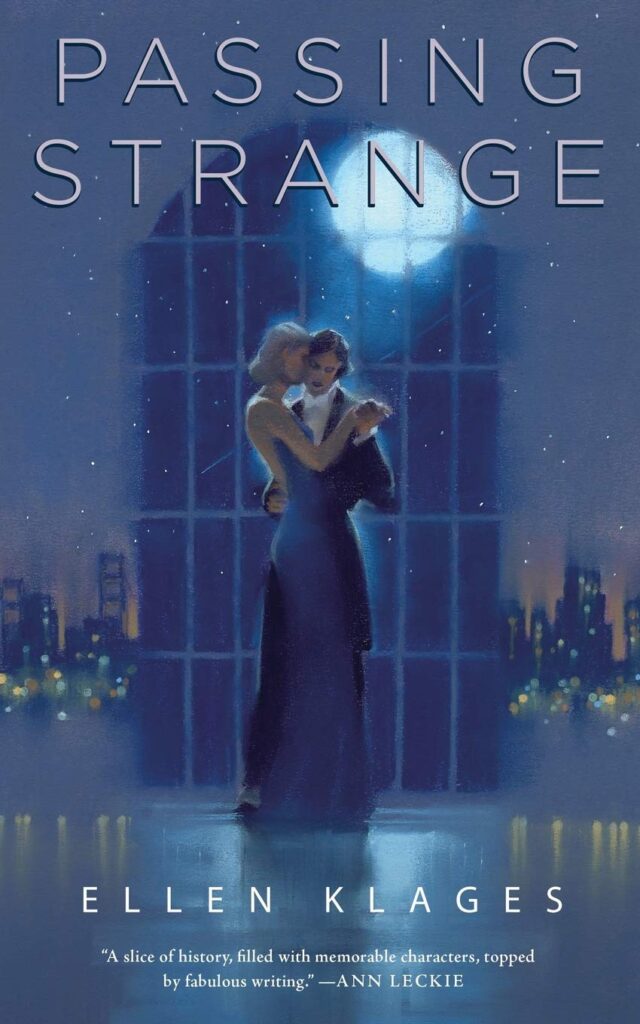
Genre: Science fiction
Audience: MG/YA
Series?: Wardenclyffe series
Rating: Liked it
For fans of: Star Trek’s Data, adventure games, the “It was earth the whole time!” trope
Achievement unlocked: I received my very first physical review copy of a book earlier this summer.
eARCs (eBooks for review) seem to be the standard for blogs like mine, and I get why. They’re much cheaper for publishers to manufacture and distribute, and reviewers can’t resell them (a controversial practice I’m not going to weigh in on right now). People with larger platforms get to require physical books for review. For the most part, I’m just happy to be invited to the party, but I was very excited to get this offer.
I was even more excited to receive the book! I can’t say for certain, but I’m guessing most physical review copies don’t come packaged so beautifully, with coordinated tissue paper and thank-you notes:
The author and publisher of Wardenclyffe, Lloyd Hall, has a fashion and costume design background, and it shows. Even discounting the gorgeous packaging, which I assume retailers like Target won’t include, the book itself is a work of art. The satiny, dark purple hardback and matching dust cover were illustrated by Abigail Spence. You can’t tell from the little digital image, but when you hold it in your hand, the drawing almost looks like a linocut. It’s stunning.
Additional illustrations throughout the book by Minna Ollikainen help bring the world of Wardenclyffe to life.

Despite its beauty, I had a tough time getting into this book at first.
We got off to a bad start. Though it remains popular, I’m always put off by the sci-fi trope where characters in futuristic settings talk about weird old artifacts they found that we, the readers, recognize as commonplace in our time:
Mary is behind the counter distributing large containers to the crowd. I look inside the container and see it filled with hundreds of tiny pieces of white material. I approach Mary …
“What is the material you are distributing?” I ask her.
Mary laughs. “It’s food, Bit!”
ANALYSIS — UNKNOWN
“I am unfamiliar with this food,” I tell her.
“Well you’re not completely unfamiliar. You know the corn we grow up in the fields behind the cafe?” she asks.
“Yes.”
“Well that’s what this is!”
DATABASE SEARCH — MATCH INCOMPATIBLE
“It does not appear to be the same,” I say. She laughs again.
“No it is, I promise! We just found a new way to cook it,” she explains.
“What method of preparation causes the physical appearance to change?” I ask.
“Well, Bruce found us this old book of recipes. If you take the corn kernels and heat them they do this.”
This happens several times in the first few chapters, and I seriously considered DNF’ing the book because of it.
Another problem I had is the book is written in a style that feels overly simplistic for the intended audience (thirteen- to eighteen-year-olds).
This could be a deliberate stylistic choice. The narrator, Bit, is an android. Though she’s physically stronger than ordinary humans, doesn’t age, and has perfect recall, Bit lacks several basic human traits, including emotions and the capacity to recognize beauty. She’s overly literal and lacks a sense of humor.
It makes sense that her sentences would be short and direct with limited sensory details, but I still struggled with them at first. I barely made it through the disaster that cuts off all power to Valentine and the surrounding towns and Bit’s decision to journey north (for years, if she has to) in search of a scientist she believes may have a solution.
Things changed for me almost as soon as she got out of town. While I struggled to invest in any of Wardenclyffe’s characters, I found the world fascinating and mysterious.
Bit travels through a town called Paradise, where most people spend their days turning power switches on and off to make sure they use the exact same amount of power in the exact same way as they have for generations, and an island called St. Helens, where technology is reviled and melted down for scrap. The people of Paradise believe disasters are the result of breaking tradition. The people of St. Helens believe they’re caused by technology.
I started to think of Wardenclyffe less as a novella and more as an adaptation of an adventure game or a Twilight Zone episode. It gave me serious Myst vibes. That way, the odd, clunky dialogue seems less like a flaw and more like an essential element of the genre.
As Bit travels, we learn more about the history of her world. A catastrophic event referred to as “the flooding” resulted in the loss of most of the human population as well as most human knowledge, so that surviving people can use old technology but they cannot repair it or create new technology. I like that the book doesn’t try to explain what caused the flood or fill in every detail of the world before and after. That kind of granular worldbuilding has to be immaculate, and leaving it vague makes it easier to suspend disbelief.
It wasn’t until Bit reached St. Helens that I realized her world is actually our world. St. Helens is an island in a thermal lake either near or in the crater of Mount St. Helens in Washington state. June, the location of the titular Wardenclyffe lighthouse, is Juneau, Alaska. Paradise is a town in California, and I think Valentine might refer to Valentine Camp, also in California. This is maybe hypocritical, given what I said earlier, but I was delighted by these breadcrumbs and felt very smart for getting them.
Wardenclyffe, if you’re wondering, is not actually a lighthouse in Alaska. It was an “early experimental wireless transmission station” built by in New York Nikola Tesla, later torn down to settle some of his debts. I didn’t know that part in advance. Google told me.
The mysteries of the scientist and what happened to Valentine’s power are tied to the mystery of Bit’s creation and why she has outlasted all the other androids. She finds all the answers she’s looking for near Wardenclyffe, which should make for a satisfying ending. I’m still torn on whether or not it does, though. I think it’s thematically appropriate, but perhaps because I never connected with the characters, I didn’t find it particularly emotionally resonant.
Still, I really enjoyed exploring the world of Wardenclyffe, and I’m intrigued by the possibility of future books. I’d definitely pick up book two if it had a different narrator with a more descriptive voice.
Can you do me a favor?
If you like this review, please like it on Goodreads and maybe follow me there.
More Info
Publisher: Self published
Hardback Page Count: 238
Lloyd Hall is on Twitter, Instagram, and Goodreads.
You can preorder the book (out October 1) directly from the author’s website.
